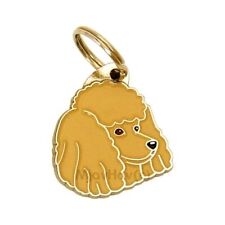How Can Cats Play the Piano?

Well over 16 million people have viewed "Nora the Piano Cat" on YouTube. (Lithuanian conductor Mindaugas Piecaitis even composed a Catcerto symphony for Nora.) And now there’s Schmaltzy, a New York shelter rescue that Animal Fair magazine has called "a feline prodigy" and what "may just be the most famous cat in the world." Owner Sharon Lampert has that last quote inscribed on the cover of her book, In America, Even a Cat Can Have a Dream: Schmaltzy: The Piano Virtuoso. Schmaltzy’s international fan club seems to prove that people the world over are smitten with Schmaltzy the shorthair tabby and other piano-playing felines.
Schmaltzy’s Story
Schmaltzy was only 8 weeks old when Lampert adopted the cat from the North Shore Animal League Rescue Shelter in Post Washington, N.Y. "I walked into the cat adoption room, and in less than a New York minute, it was love at first sight," says Lampert. "He had a very big personality, even as a kitten."
One day, Lampert found a toy piano on the street. She brought it home, placed it on the carpet, and Schmaltzy gave it a sniff. "Unlike any other cat, he tucked his legs under his behind and picked up his paw and hit the keys in succession. An artist was born," says Lampert. According to Lampert, "Schmaltzy is self-taught." He now plays a black baby grand tabletop piano, donated by The First Act, a children’s music company.
Self-Taught … or Inadvertently Trained?
Marilyn Krieger, a certified cat behavior consultant known as "The Cat Coach" doesn’t believe any natural cat behaviors would lead to piano playing, except that cats touch objects with their paws. Krieger believes Nora and Schmaltzy were "reinforced when they first touched the keyboard. They were probably praised, given lots of attention and maybe given a treat." Lampert fully admits to rewarding Schmaltzy with food treats, after which, "playing the piano became his passion."
Can All Cats Become Music Stars?
Krieger indicates that not all cats should be encouraged to play the piano or to perform other stunts. "The cat needs to enjoy the process and want to participate. When teaching parlor tricks, they should all be based on natural behaviors," says Krieger. Proper training, according to Krieger, benefits cats in at least six different ways:
- Strengthens the cat-owner bond.
- Increases the cat’s confidence.
- Provides consistency, which cats crave.
- Offers the cat entertainment and a challenge.
- Diverts a cat’s attention away from unwanted behaviors.
- Enables the cat to tolerate practical and often lifesaving tasks, such as veterinary office visits and necessary grooming.
Training Tips
If you would like train your cat to play the piano, Lampert offers the following tips:
- Pick the right treat to reward your cat. It has to be a treat that your cat loves, not just likes.
- Offer the treat right after your cat hits a piano key. "There is a learning curve," she explains. "Your cat has to associate hitting the piano keys with earning a treat."
- After a piano recital, pick up your cat and give a big hug and kiss. Let your pet know how talented and special it is.
The Web is now full of Nora and Schmaltzy wannabes, with their owners seeking to earn their own fame and fortune. It’s important to remember, however, to always put the interests of the cat first instead of focusing solely on transforming kitty into the next YouTube sensation.













